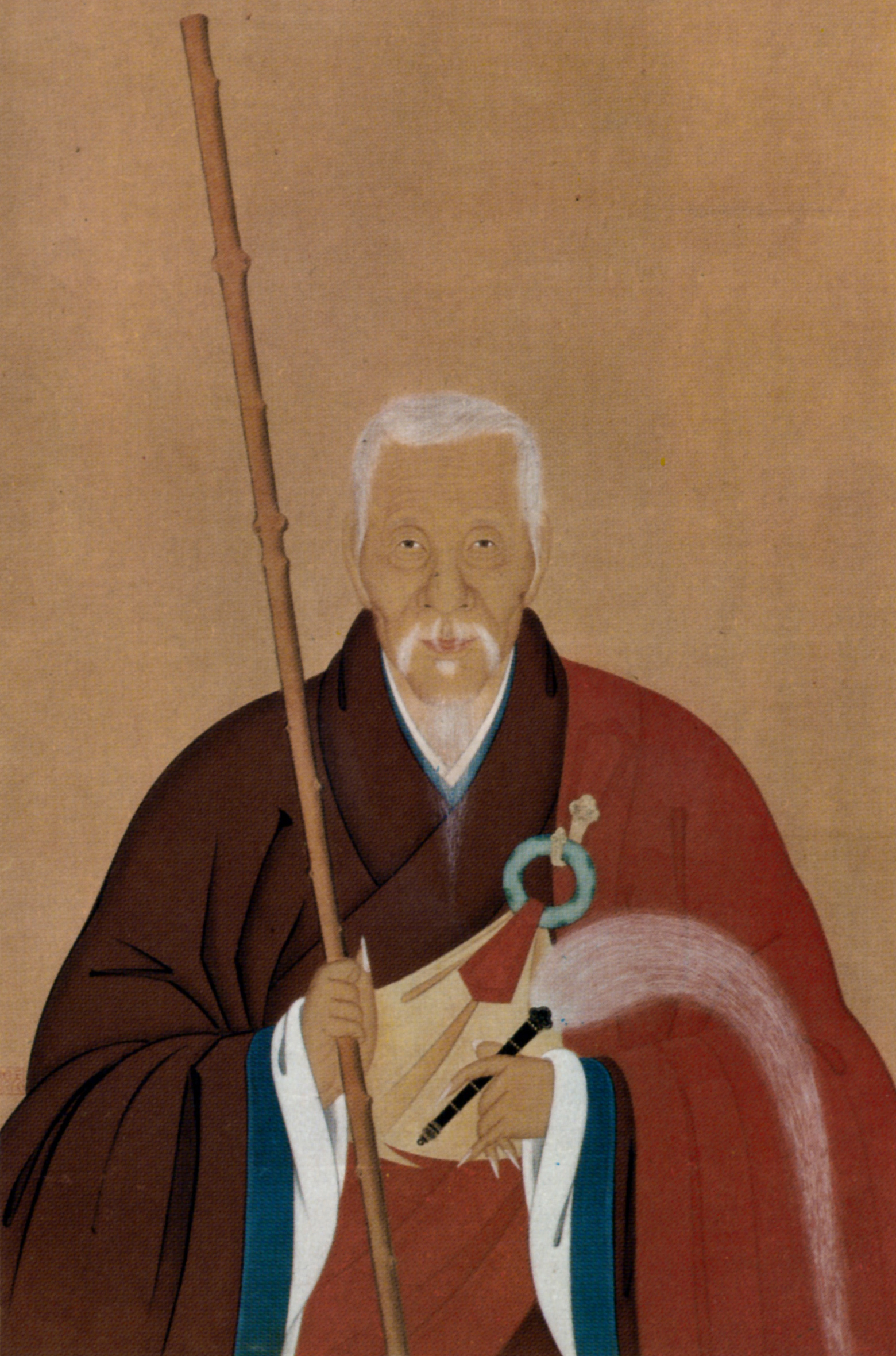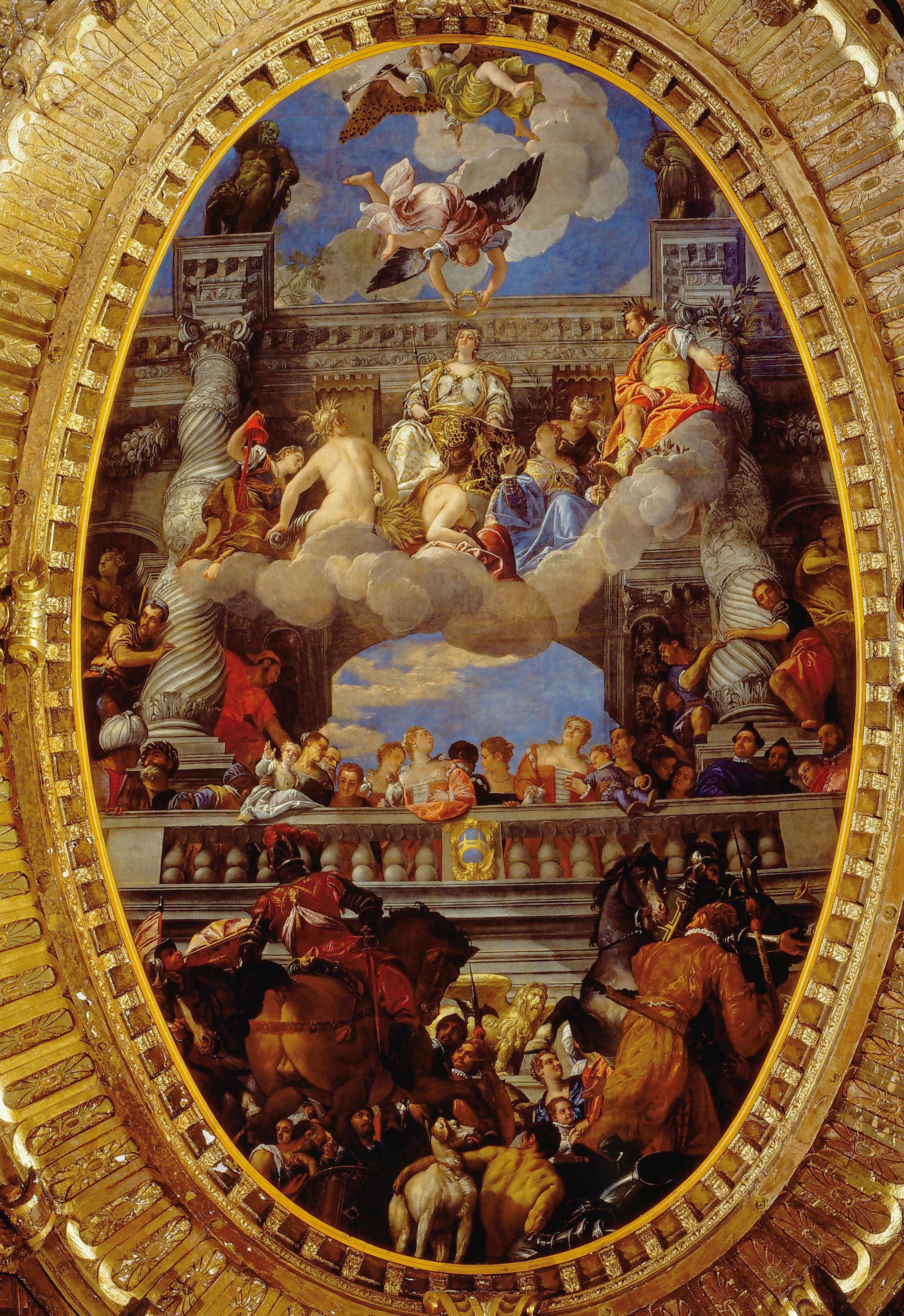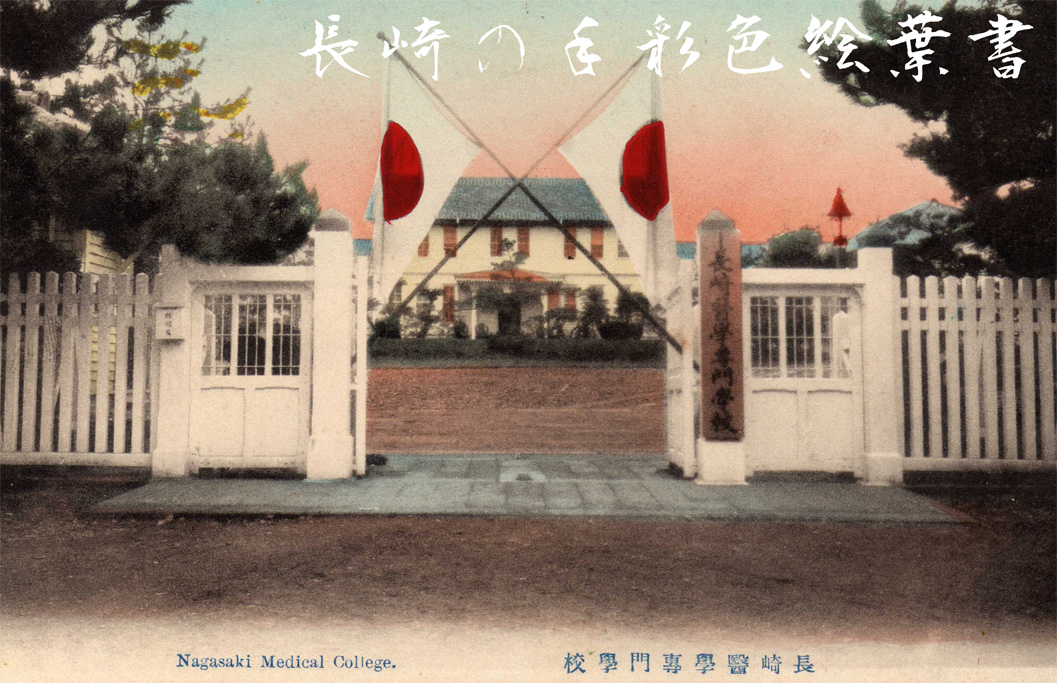|
Kofukuji (Nagasaki)
Kōfuku-ji or Tōmeizan Kōfuku-ji. ( ja, , ''Tōmeizan Kōfuku-ji'') is a Buddhist temple of the Ōbaku, Ōbaku school of Zen established in 1624 in Nagasaki, Japan. It is an National Treasure (Japan), important cultural asset designated by the government. Its Mazu Hall (''Masu-do'') or Bodhisattva Hall (''Bosa-do''). is one of the few list of Mazu temples, temples located in Japan of the Chinese folk religion, Chinese sea goddess known as Mazu, the apotheosis, deified form of the medieval Fujianese shamanism, shamaness Lin Moniang (). Gallery Image:Nagasaki Kofukuji M5667.jpg, Main hall Image:Nagasaki Kofukuji M5682.jpg, Bell and drum tower References External links * . & *Kōfuku-ji at Nagasaki University *Toumeizan Koufukuji Buddhist temples in Nagasaki Prefecture Buildings and structures in Nagasaki Obaku temples 1624 in Japan Buildings and structures completed in 1624 Mazu temples {{Nagasaki-geo-stub ... [...More Info...] [...Related Items...] OR: [Wikipedia] [Google] [Baidu] |
Ōbaku
The is one of several schools of Zen in Japanese Buddhism, in addition to Sōtō and Rinzai. History Often termed the third sect of Zen Buddhism in Japan, Ōbaku-shū was established in 1661 by a small faction of masters from China and their Japanese students at Manpuku-ji in Uji, Japan. Today Manpuku-ji serves as the Ōbaku's head temple, with 420 subtemples spread throughout Japan as of 2006. In addition to their contribution to the culture of Zen in Japan, the Ōbaku also "disseminated many aspects of Ming-period culture" in the country. Many of the monks who came from China were accomplished calligraphers, and Obaku's founder Yinyuan Longqi and two other Ōbaku masters, Mokuan Shōtō and Sokuhi Nyoitsu, became known as the Ōbaku no Sanpitsu (or, the "Three Brushes of Ōbaku"). Author Steven Heine writes, "Areas where the influence of — or the reaction to — Ōbaku left an imprint on Japanese Buddhism is manifold, and its impact even reached the fields of Japanese cu ... [...More Info...] [...Related Items...] OR: [Wikipedia] [Google] [Baidu] |
Apotheosis
Apotheosis (, ), also called divinization or deification (), is the glorification of a subject to divine levels and, commonly, the treatment of a human being, any other living thing, or an abstract idea in the likeness of a deity. The term has meanings in theology, where it refers to a belief, and in art, where it refers to a genre. In theology, ''apotheosis'' refers to the idea that an individual has been raised to godlike stature. In art, the term refers to the treatment of any subject (a figure, group, locale, motif, convention or melody) in a particularly grand or exalted manner. Ancient Near East Before the Hellenistic period, imperial cults were known in Ancient Egypt (pharaohs) and Mesopotamia (from Naram-Sin through Hammurabi). In the New Kingdom of Egypt, all deceased pharaohs were deified as the god Osiris. The architect Imhotep was deified after his death. Ancient Greece From at least the Geometric period of the ninth century BC, the long-deceased heroes lin ... [...More Info...] [...Related Items...] OR: [Wikipedia] [Google] [Baidu] |
1624 In Japan
Events January–March * January 14 – After 90 years of Ottoman occupation, Baghdad is recaptured by the Safavid Empire. * January 22 – Korean General Yi Gwal leads an uprising of 12,000 soldiers against King Injo in what is called then the Joseon Kingdom, and occupies Hanseong. * January 24 – Afonso Mendes, appointed by Pope Gregory XV as Prelate of Ethiopia, arrives at Massawa from Goa. * February – * February 11 – Yi Gwal installs Prince Heungan, son of the late King Seongjo, to the Korean throne. * February 15 – Yi Gwal's Rebellion ends as the rebels murder Yi Gwal at the town of Mukbang-ri. * February 16 – Kara Mustafa Pasha becomes the Ottoman Governor of Egypt for the second time. * February 19 – ** King Filipe III of Portugal issues a decree prohibiting the enslavement of Chinese people in Portugal or in its colonies. **The last parliament of King James I of England begins it session. * February 2 ... [...More Info...] [...Related Items...] OR: [Wikipedia] [Google] [Baidu] |
Obaku Temples , a village
{{disambig ...
Ōbaku (黄檗 Japanese ''Ōbaku'', pinyin ''Huángbò'') is the Amur Corktree. It may refer to: *Mount Huangbo (), a mountain in China's Fujian province, noted for its Buddhist temples *Mount Ōbaku (, ''Ōbaku-san''), a mountain in the city of Uji in Japan *Huangbo Xiyun (黄檗希運), a Chinese Chan Buddhist master *The Japanese Ōbaku School (黄檗宗) of Zen Buddhism Obaku may also refer to: *Obaku, Nigeria Ogbaku is a town made up of eighteen (18) villages in Mbaitoli Local Government Area of Imo state, South Eastern Nigeria. It is situated along Onitsha-Owerri road. It is about 12 km to the capital city of Owerri. There is a cottage Hospita ... [...More Info...] [...Related Items...] OR: [Wikipedia] [Google] [Baidu] |
Buildings And Structures In Nagasaki
A building, or edifice, is an enclosed structure with a roof and walls standing more or less permanently in one place, such as a house or factory (although there's also portable buildings). Buildings come in a variety of sizes, shapes, and functions, and have been adapted throughout history for a wide number of factors, from building materials available, to weather conditions, land prices, ground conditions, specific uses, monument, prestige, and aesthetic reasons. To better understand the term ''building'' compare the list of nonbuilding structures. Buildings serve several societal needs – primarily as shelter from weather, security, living space, privacy, to store belongings, and to comfortably live and work. A building as a shelter represents a physical division of the :Human habitats, human habitat (a place of comfort and safety) and the ''outside'' (a place that at times may be harsh and harmful). Ever since the first cave paintings, buildings have also become objects or ... [...More Info...] [...Related Items...] OR: [Wikipedia] [Google] [Baidu] |
Buddhist Temples In Nagasaki Prefecture
Buddhism ( , ), also known as Buddha Dharma and Dharmavinaya (), is an Indian religion or philosophical tradition based on teachings attributed to the Buddha. It originated in northern India as a -movement in the 5th century BCE, and gradually spread throughout much of Asia via the Silk Road. It is the world's fourth-largest religion, with over 520 million followers (Buddhists) who comprise seven percent of the global population. The Buddha taught the Middle Way, a path of spiritual development that avoids both extreme asceticism and hedonism. It aims at liberation from clinging and craving to things which are impermanent (), incapable of satisfying ('), and without a lasting essence (), ending the cycle of death and rebirth (). A summary of this path is expressed in the Noble Eightfold Path, a training of the mind with observance of Buddhist ethics and meditation. Other widely observed practices include: monasticism; " taking refuge" in the Buddha, the , and the ; ... [...More Info...] [...Related Items...] OR: [Wikipedia] [Google] [Baidu] |
Nagasaki University
is a national university of Japan. Its nickname is ''Chōdai'' (). The main campus is located in Bunkyo-machi, Nagasaki City, Nagasaki Prefecture, Japan. History Nagasaki University was established in 1949 by incorporating several national institutions, namely, Nagasaki Medical College (including College Hospital and College of Pharmaceutical Sciences), Nagasaki College of Economics, Nagasaki Normal School, Nagasaki Youth Normal School and Nagasaki High School. The new main campus (Bunkyo Campus) was formerly a plant site of Mitsubishi Arms Factory (Ohashi Plant). Nagasaki Medical College The oldest of the predecessors was Nagasaki Medical College. It was founded in November 1857 as by the branch office of Tokugawa Shogunate. The first professor was J. L. C. Pompe van Meerdervoort, and the institute was one of the first western-style (not ''Kampō'') medical schools in Japan. In 1861 the hospital was founded, and after Meiji Restoration the school became a public (prefe ... [...More Info...] [...Related Items...] OR: [Wikipedia] [Google] [Baidu] |
Shamanism
Shamanism is a religious practice that involves a practitioner (shaman) interacting with what they believe to be a Spirit world (Spiritualism), spirit world through Altered state of consciousness, altered states of consciousness, such as trance. The goal of this is usually to direct Non-physical entity, spirits or Energy (esotericism), spiritual energies into the physical world for the purpose of healing, divination, or to aid human beings in some other way. Beliefs and practices categorized as "shamanic" have attracted the interest of scholars from a variety of disciplines, including anthropologists, archeologists, historians, religious studies scholars, philosophers and psychologists. Hundreds of books and Academic publishing#Scholarly paper, academic papers on the subject have been produced, with a peer-reviewed academic journal being devoted to the study of shamanism. In the 20th century, non-Indigenous Peoples, Indigenous Westerners involved in countercultural movements, ... [...More Info...] [...Related Items...] OR: [Wikipedia] [Google] [Baidu] |
Fujian
Fujian (; alternately romanized as Fukien or Hokkien) is a province on the southeastern coast of China. Fujian is bordered by Zhejiang to the north, Jiangxi to the west, Guangdong to the south, and the Taiwan Strait to the east. Its capital is Fuzhou, while its largest city by population is Quanzhou, both located near the coast of the Taiwan Strait in the east of the province. While its population is predominantly of Chinese ethnicity, it is one of the most culturally and linguistically diverse provinces in China. The dialects of the language group Min Chinese were most commonly spoken within the province, including the Fuzhou dialect of northeastern Fujian and various Hokkien dialects of southeastern Fujian. Hakka Chinese is also spoken, by the Hakka people in Fujian. Min dialects, Hakka and Mandarin Chinese are mutually unintelligible. Due to emigration, a sizable amount of the ethnic Chinese populations of Taiwan, Singapore, Malaysia, Indonesia, and the Philippines ... [...More Info...] [...Related Items...] OR: [Wikipedia] [Google] [Baidu] |
Mazu
Mazu or Matsu is a Chinese sea goddess also known by several other names and titles. She is the deified form of the legendary figure Lin Mo or Lin Moniang, a Fujianese shamaness whose life span is traditionally dated from 960 to 987. Revered after her death as a tutelary deity of seafarers, including fishermen and sailors, her worship spread throughout China's coastal regions and overseas Chinese communities throughout Southeast Asia and overseas, where some Mazuist temples are affiliated with famous Taiwanese temples. She was thought to roam the seas, protecting her believers through miraculous interventions. She is now generally regarded by her believers as a powerful and a benevolent Queen of Heaven. Mazu worship is popular in Taiwan as large numbers of early immigrants to Taiwan were Hoklo people; her temple festival is a major event in the country, with the largest celebrations around her temples at Dajia and Beigang. Names and titles In addition to Mazu.. ... [...More Info...] [...Related Items...] OR: [Wikipedia] [Google] [Baidu] |
Nagasaki
is the capital and the largest city of Nagasaki Prefecture on the island of Kyushu in Japan. It became the sole port used for trade with the Portuguese and Dutch during the 16th through 19th centuries. The Hidden Christian Sites in the Nagasaki Region have been recognized and included in the UNESCO World Heritage List. Part of Nagasaki was home to a major Imperial Japanese Navy base during the First Sino-Japanese War and Russo-Japanese War. Near the end of World War II, the American atomic bombings of Hiroshima and Nagasaki made Nagasaki the second and, to date, last city in the world to experience a nuclear attack (at 11:02 am, August 9, 1945 'Japan Standard Time (UTC+9)'). , the city has an estimated population of 407,624 and a population density of 1,004 people per km2. The total area is . History Nagasaki as a Jesuit port of call The first contact with Portuguese explorers occurred in 1543. An early visitor was Fernão Mendes Pinto, who came from Sagres ... [...More Info...] [...Related Items...] OR: [Wikipedia] [Google] [Baidu] |
Chinese Folk Religion
Chinese folk religion, also known as Chinese popular religion comprehends a range of traditional religious practices of Han Chinese, including the Chinese diaspora. Vivienne Wee described it as "an empty bowl, which can variously be filled with the contents of institutionalised religions such as Buddhism, Taoism, Confucianism, the Chinese syncretic religions". This includes the veneration of ''shen'' (spirits) and ancestors, exorcism of demonic forces, and a belief in the rational order of nature, balance in the universe and reality that can be influenced by human beings and their rulers, as well as spirits and gods. Worship is devoted to gods and immortals, who can be deities of places or natural phenomena, of human behaviour, or founders of family lineages. Stories of these gods are collected into the body of Chinese mythology. By the Song dynasty (960-1279), these practices had been blended with Buddhist doctrines and Taoist teachings to form the popular religious sy ... [...More Info...] [...Related Items...] OR: [Wikipedia] [Google] [Baidu] |








.jpg)